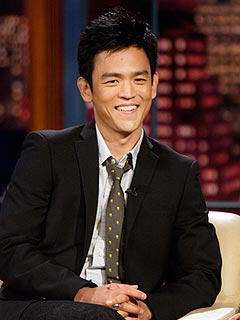JERUSALEM — The story had all the trappings of a spy thriller: an anonymous prisoner linked to Israel’s secret service, Mossad, isolated in a top-security wing originally built for the assassin of a prime minister. A suicide — or was it a murder? — never officially reported. A gag order that barred journalists from even acknowledging the gag order. And a code name to rival 007: Prisoner X.
The first reports about the death of Prisoner X leaked out in 2010, both in Israel and the United States, where a blogger identified the mystery man as a former Iranian general. Government censors immediately forced an Israeli news site to remove two items related to Prisoner X — and journalists were interrogated about it by the police.
On Tuesday, after an extensive Australian television report identifying Prisoner X as an Australian father of two who became an Israeli spy, the prime minister’s office summoned Israeli editors to a rare meeting to remind them of the court order blocking publication of anything connected to the matter.
It remains unclear what Prisoner X might have done to warrant such extreme treatment — and such extreme secrecy, which human rights groups have denounced as violating international law. What is clear is that the modern media landscape makes the Israeli censorship system established in the 1950s hopelessly porous: the Australian report quickly made the rounds on social media, prompting outraged inquiries from opposition lawmakers on the floor of Parliament.
“The Israeli public will know sooner or later what happened,” declared Nahman Shai, a Parliament member from the Labor Party.
Aluf Benn, the editor of the Israeli daily Haaretz, said the government forced him and another news organization to delete items about the Australian reports from their Web sites on Tuesday. Later, Haaretz posted an article on the unusual editors meeting and the parliamentary discussion.
“They live in a previous century, unfortunately,” Mr. Benn said of the Israeli administration. “Today, whatever is blocked in news sites is up in the air on Facebook walls and Twitter feeds. You can’t just make a story disappear. I hope that they’re more updated in whatever they do professionally.”
The prime minister’s office and prison service declined on Tuesday to comment. “I can’t tell you anything; I’m not dealing with this,” said the prison spokeswoman, Sivan Weizman. “I can’t answer any question about it. Sorry.”
On Wednesday morning, Israel Radio reported that the government had partially lifted the gag order, allowing local media to publish articles quoting foreign reports but not ones based on original material.
The Australian report, a half-hour segment based on a 10-month investigation that was broadcast Tuesday on the ABC News magazine program “Foreign Correspondent,” identified Prisoner X as Ben Zygier and said he had used the name Ben Alon in Israel. Mr. Zygier immigrated to Israel about a decade before his death at age 34, married an Israeli woman and had two small children, according to the report.
“ABC understands he was recruited by spy agency Mossad,” read a post on the Australian network’s Web site. “His incarceration was so secret that it is claimed not even guards knew his identity.” Mr. Zygier “was found hanged in a cell with state-of-the-art surveillance systems that are installed to prevent suicide,” it said, adding that guards tried unsuccessfully to revive him and that he was buried a week later in a Jewish cemetery in a suburb of Melbourne.
A spokeswoman for the Australian government said in an e-mail that its embassy was unaware of the prisoner’s detention until his family asked for help repatriating the remains, and that she could not “comment on intelligence matters (alleged or actual).”
The Australian report builds on news items from 2010 that described the death of Prisoner X in solitary-confinement cell 15 in a part of Israel’s Ayalon Prison said to have been created especially for Yigal Amir, who killed Prime Minister Yitzhak Rabin in 1995. Prisoner X was not allowed visitors or a lawyer, according to those reports.
Richard Silverstein, an American blogger, claimed in 2010 that Prisoner X was Ali-Reza Asgari, a former general in Iran’s Islamic Revolutionary Guards Corps and a government minister, who had previously been reported to have defected to Israel and cooperated with Western intelligence agencies. On Tuesday, Mr. Silverstein acknowledged his error, saying his source apparently was part of “a ruse designed to throw the media off the scent of the real story.”
Bill van Esveld, a Jerusalem-based analyst with Human Rights Watch, said the reports suggested a serious violation of international law. “That’s the most basic obligation you can think of, not disappearing people,” he said. “You can’t take somebody into detention, deny any knowledge of them, and not allow their families to be in communication with them, not allow them to see a lawyer or have any due process. That’s what needs to be looked into.”
Dov Hanin, a member of Parliament from the left-wing Hadash Party, on Tuesday questioned Israel’s justice minister, Yaakov Ne’eman, about Prisoner X, asking: “Are there people whose arrest is kept a secret? What are the legal monitoring mechanisms in charge of such a situation? What are the parliamentary monitoring systems in charge of such a situation? And how can public criticism exist in cases of such a situation?”
Mr. Ne’eman replied that the matter did not fall under his jurisdiction, but said, “There is no doubt that if true, the matter must be looked into.”
Israel has long employed a military censor and refused to acknowledge certain operations, most recently its airstrike last month in Syria. Most politicians here offer only winks and nods about Israel’s well-known nuclear program, and Israeli journalists are left to quote foreign news media reports about such things. Two weeks ago, Reporters Without Borders ranked Israel 112th out of 179 countries on its annual press freedom index.
But even within that context, experts said the Prisoner X situation was extraordinary. They likened it to the case of Marcus Klingberg, a Soviet spy who was held in Israel for years under a false name.
“There are some episodes in the history of Israel that are still kept under the strongest secrecy thick veil possible,” said Ronen Bergman, an Israeli journalist and contributing writer for The New York Times Magazine who is writing a book about the Mossad. “Some of them are 40 years old, 50 years old, and are still under thick, thick secrecy, and anyone violating this secrecy would be thrown into jail himself.”
Mr. Bergman said he had information about Prisoner X but could not share it because “so far the gag order is in motion and I’m an Israeli citizen.” Three former directors of the Mossad also refused on Tuesday to comment on the case.
“This is the topic you want to talk to me about? No way,” said Danny Yatom, who headed the spy agency in the late 1990s and later served as a Labor member of Parliament. “I don’t know if it is true or not. Even if I would have known if it were true, I wouldn’t have talked about it.”











